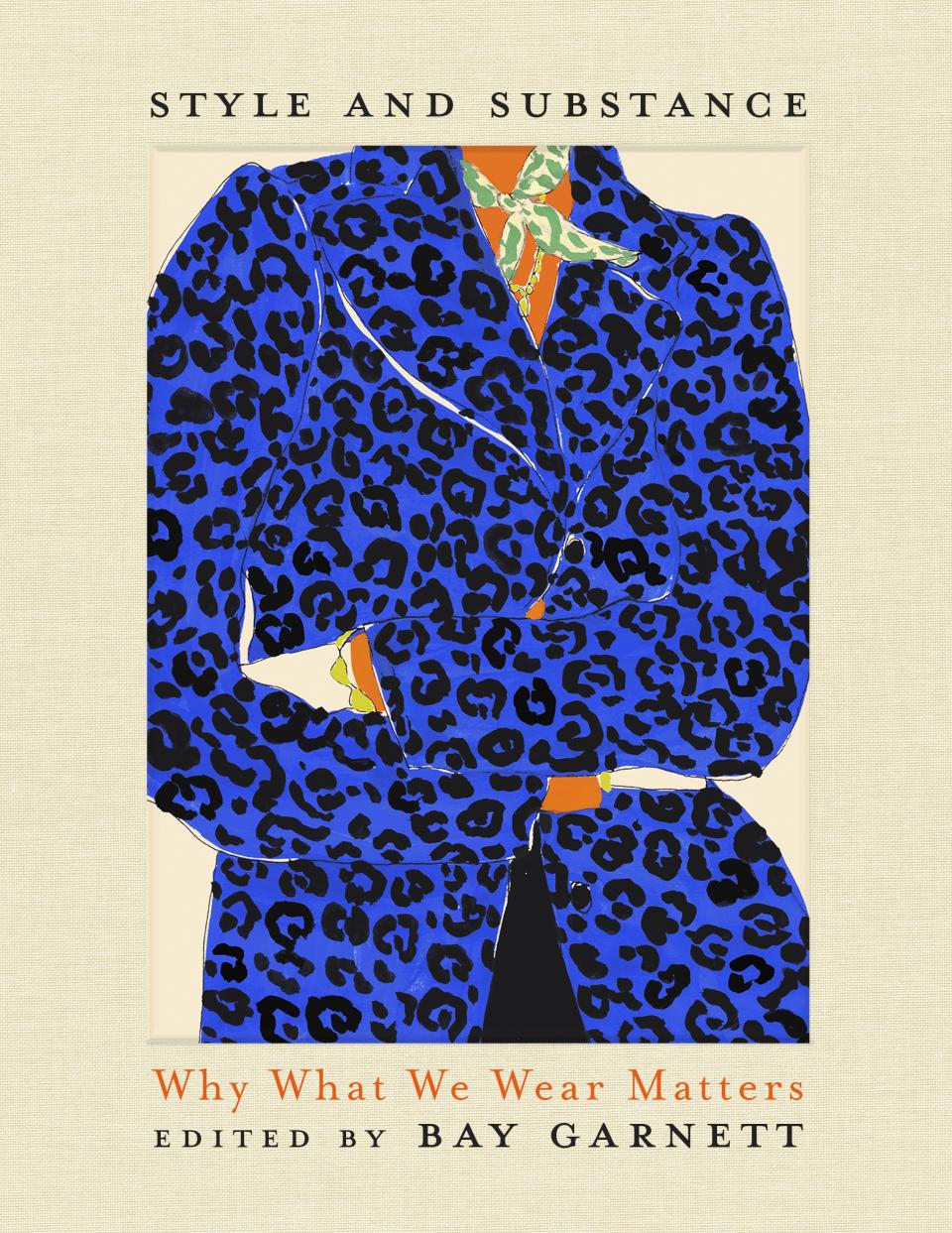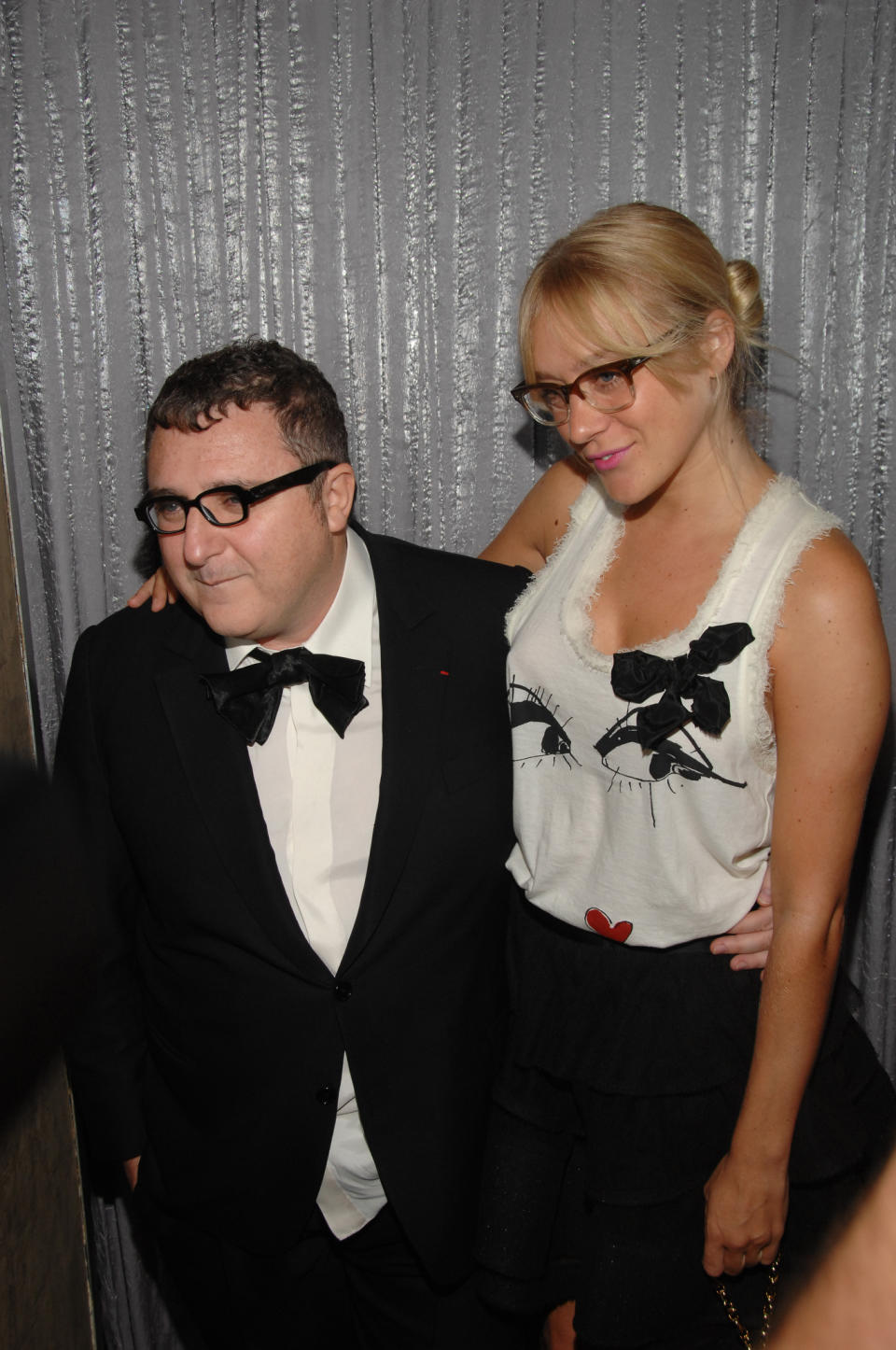Out of the Closet

LONDON — Ever wonder why Daphne Guinness has tall, two-tone hair? Or why Joan Collins won’t leave the house without a face full of makeup? Or about the one article of clothing Chloë Sevigny would save if her house was on fire?
Bay Garnett, the London stylist, editor, photographer and vintage devotee, has those answers, and more, in her new book, “Style and Substance: Why What We Wear Matters” (John Murray).
More from WWD
The book, a compilation of essays, interviews and literary excerpts, reveals the magical hold that clothing, color, fabric and jewelry have on fashion lovers, celebrities and writers living and dead.
Across more than 200 pages, there are Maya Angelou writing about a special lavender taffeta dress; F. Scott Fitzgerald’s description of monogrammed English shirts so exquisite they elicit tears, and Anaïs Nin on the power of her Byzantine-style brocades and bejewelled costumes.
Garnett also interviewed stylists, costume and fashion designers, creatives and entrepreneurs about the one piece of clothing they’d save if their home was on fire; talked to actor Rachel Weisz about her love of denim, and to designer Bella Freud about the charm of a suit.
There are revelations, and confessions.
Guinness talks about how her tall black-and-white hairdo evolved while Joan Collins reveals her Damascene makeup moment, and why everyone can look like a diva. “No-one is born glamorous but practically anyone can develop glamour,” she writes.
Lucinda Chambers talks about fantastic colors, and the unlikely places she finds them, “like a hospital ward or a tile I bought at a car boot sale. I spot a particular leaf on the pavement, a belt on a market stall,” says the former fashion director at British Vogue and founder of the online site Collagerie and the fashion brand Colville.

In an interview, Garnett says she was “amazed by how deep people were when they talked about fashion. That was a revelation to me. They opened up their wardrobes, and their thoughts, and their hearts around the way that clothes make them feel. It reinforced my own love of clothes, and it kind of made me care more about what I wear as well.”
Garnett, who cofounded the 2000s antifashion magazine Cheap Date and copublished Fanpages, a compilation of one-page fanzines, also drew on the work of literary stars including Bernardine Evaristo, Chimamanda Ngozi Adichie, and Zadie Smith.
Evaristo writes about color. “A shirt of bright pink, lemon and orange swirls? Lovely! This I will mismatch with a multicolored African-print headscarf. Beige is anathema to me. Black depresses me if I don’t break it up with a startlingly loud color.”
Smith, who’s living between London and New York, admits to being eternally confused about the appropriate occasion wear for each place. She knows, however, that “in both cities, as far as I can tell, the heel as daywear is dead.”
Garnett says the idea for “Style and Substance” started with costume designer Sandy Powell, who talks about creating a character and the huge influence that David Bowie and Biba have had on her style and career.
“I thought Sandy would be really interesting talking about clothes and character. And then I wondered what does Chloë Sevigny think [about style]? And what does Charlotte Tilbury have to say about glamour? It was kind of like an archaeological dig, finding out what people think, and their schtick,” says Garnett.
What emerged, she adds, was how “un-superficial” fashion is.

“Clothes and fashion are seen and scolded as superficial. There is that element. But clothes are the fabric of our lives, and [the book is about] how powerful they can be and the potential they hold,” Garnett says.
Asked about some of the specific outfits that captured her imagination, Garnett points to Count Dracula’s all-black look in an excerpt from Bram Stoker’s famous novel, and Sylvia Plath’s description of a $40 black shantung sheath in “The Bell Jar.”
“The dress was cut so queerly I couldn’t wear any sort of bra under it … and I liked feeling almost naked on the hot summer nights,” Plath writes.
Garnett also interviewed Sevigny, a longtime style inspiration.
Sevigny says that if her house was on fire she’d probably save the black halterneck gown that Alber Elbaz designed for her when he was at Yves Saint Laurent. She wore it on the red carpet in 2000 when she won Best Supporting Actress for “Boys Don’t Cry.”
“On that night, I felt wonderful. I wanted a classic film star look that wouldn’t date. Alber helped me to achieve my dream of old Hollywood glamour,” says Sevigny.
Garnett also shares Sevigny’s fascination with making everyday dress special.
Sevigny says she’s always loved Depeche Mode’s Dave Gahan, “who would wear a black turtleneck and jeans and black loafers and make it look like such a special version of something everyday. I was always striving for that.”
Garnett, who during the interview is wearing a purple and green vintage Burberry sweatshirt, tracksuit bottoms, and a pair of Nike and Jacquemus J Force trainers, says she tries to do the same thing.
“I don’t dress up, so for me it’s that thing of how to make the everyday special,” says Garnett, adding that if there is any message these stories convey it is that “making an effort, thinking about what we wear, and what we want to project can be a really life-enhancing thing.”
Best of WWD


